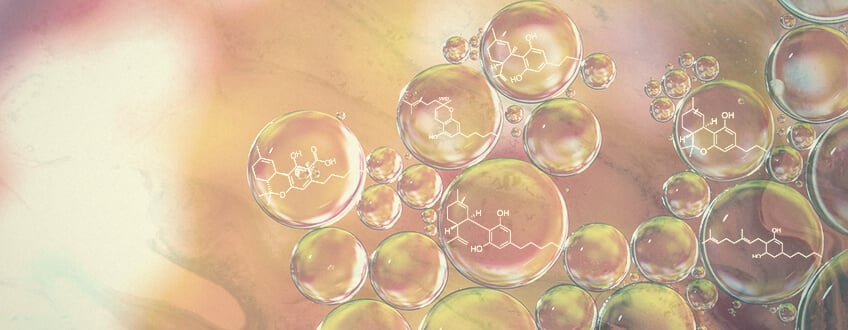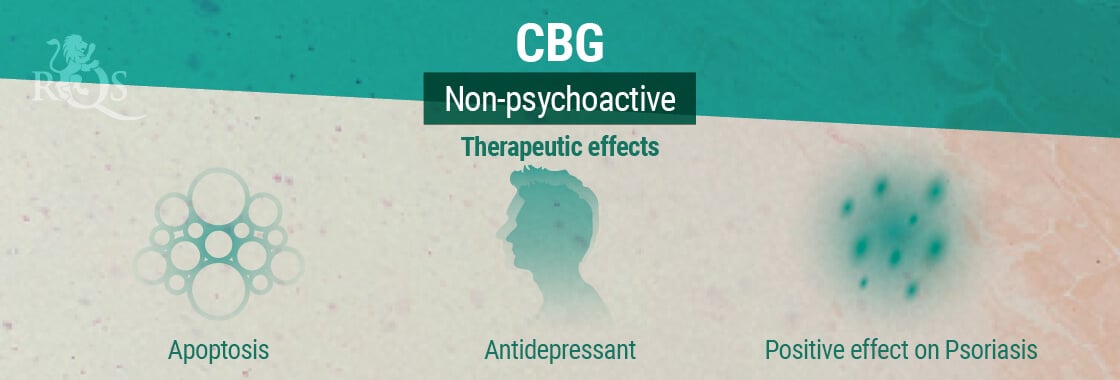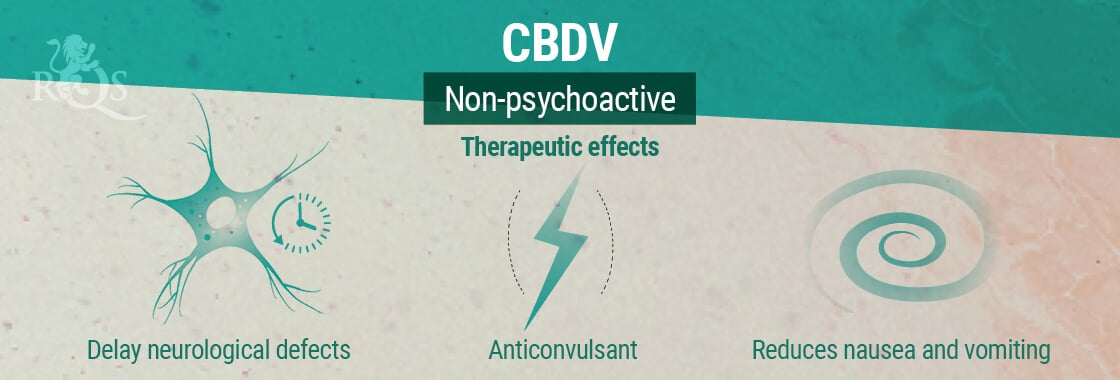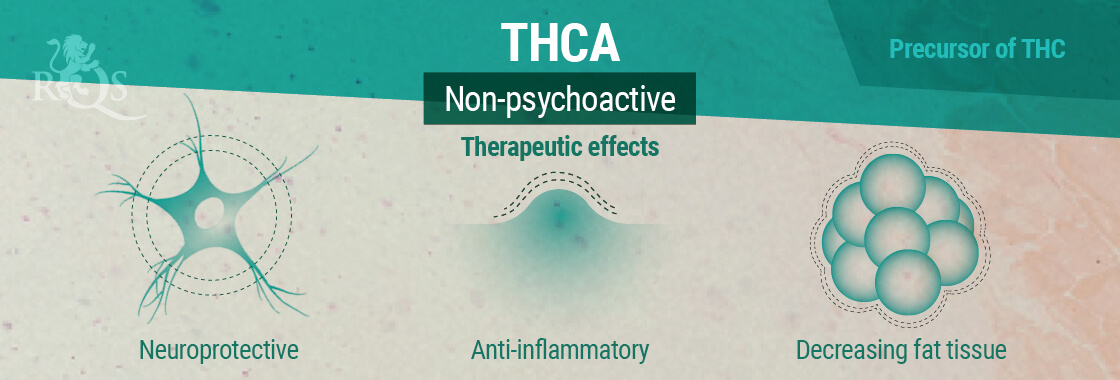What are Cannabinoids and why are they important?

Contents:
- 1. What are the functions of cannabinoids?
- 2. How cannabinoids are created: biosynthesis
- 3. Cannabinoid acids vs. cannabinoids
- 4. Introducing the major cannabinoids
- 5. THC
- 6. CBD
- 7. CBG
- 8. CBN
- 9. CBC
- 10. THCV
- 11. CBDV
- 12. THCA
- 13. CBDA
- 14. The future of cannabinoid research
All cannabis enthusiasts will have heard of THC, known to science as (–)-trans-Δ⁹-tetrahydrocannabinol. This molecule is responsible for the distinguished psychoactive effects felt after smoking a spliff or puffing on a vaporizer. Many will also have heard of CBD, or cannabidiol, by this point.
Both THC and CBD belong to a chemical class called cannabinoids. This class is composed of a diverse array of molecules that act upon cannabinoid receptors. THC and CBD are phytocannabinoids, meaning they are synthesised in and derived from the cannabis plant. Over 100 of these molecules have been identified to date. Another cannabinoid type are endocannabinoids, which are created in the body, and include anandamide and 2-AG. Finally, there are those cannabinoids that are synthesised in laboratories; these are called synthetic cannabinoids.
In this article, our focus is on the phytocannabinoids. Many of these molecules have been studied by science, and have displayed an impressive therapeutic potential to boot. Before we delve into individual cannabinoids, let’s look at the function of cannabinoids and how they are created.
WHAT ARE THE FUNCTIONS OF CANNABINOIDS?
The answer to this query all depends on the life form in question. Plants produce cannabinoids as secondary metabolites; they aren’t directly involved in the growth or development of the plant, and are believed to instead play a protective role against pests, diseases, and ultraviolet radiation. For example, the phytocannabinoid THCA has been shown to prompt the death of insect cells, suggesting it serves as a defence mechanism against certain species that decide to make lunch out of cannabis flowers and leaves.
In humans, cannabinoids work in a very unique and specific manner. Some of them directly interact with the endocannabinoid system, an internal network of receptor sites found on many cell types. These receptors, namely the CB1 and CB2 receptors, are found throughout the central nervous system and immune system. Certain cannabinoids, for example THC, produce psychoactive and therapeutic effects by interacting with these sites.
The endocannabinoid system plays a regulatory role within the body and helps the organism maintain a state of homeostasis—the biological dynamic equilibrium our bodies require to function optimally. The endocannabinoid system has been found to play a role in the regulation of the endocrine system and metabolism.
The aforementioned endocannabinoids anandamide and 2-AG serve as signalling molecules that interact with these receptors to allow the endocannabinoid system to exert these functions[1]. The molecular similarity between phytocannabinoids and endocannabinoids is what makes it possible for these external counterparts to induce physiological effects.



HOW CANNABINOIDS ARE CREATED: BIOSYNTHESIS
It’s both important and interesting to know how cannabinoids are created. Have you ever looked closely at a cannabis flower and witnessed what appears to be thousands of glistening jewels? These translucent, mushroom-shaped structures are called glandular trichomes, and are responsible for producing a resin rich in cannabinoids, terpenes, and more.
Cannabis plants direct nutrients to these glands, specifically the secretory cells, where they are turned into the precursors for cannabinoid production. These precursors are then transported to the secretory vesicles, where they are built into trichomes and eventually excreted.
All cannabinoids start off life as CBGA (cannabigerolic acid). This cannabinoid acid is formed via the combination of cannabinoid precursors olivetolic acid and geranyl pyrophosphate after an array of chemical processes[2]. CBGA is the precursor of cannabinoid biosynthesis, and is used as a substrate to create other cannabinoids via enzymes CBDAS, CBCAS, and THCAS. Depending on the enzyme used, the outcome of this reaction is either CBDA (cannabidiolic acid), CBCA (cannabichromenic acid), or THCA (tetrahydrocannabinolic acid).
CANNABINOID ACIDS VS. CANNABINOIDS
Cannabinoids occur naturally within cannabis plants in their acid form. Their molecular structure is different because of the addition of a carboxyl group. However, this group has some volatility and can be removed via heat or degradation. For example, raw cannabis flowers contain THCA as opposed to THC. When these flowers are placed into a joint and a flame is applied, the heat catalyses the release of a carboxyl group, and inactive THCA becomes psychoactive THC. This process is known as decarboxylation.
INTRODUCING THE MAJOR CANNABINOIDS
Of the 100+ discovered cannabinoids, only a few have been studied to a relatively in-depth degree. Here, we’ll take a look at the characteristics of each, and see what the research says about their therapeutic potential. We’ll start with the most familiar, and then delve into some of the lesser-known molecules.
THC


THC is perhaps the most famous of all cannabinoids, as well as the most controversial. This chemical is primarily responsible for the mind-altering high induced when smoking or ingesting cannabis, and also has a variety of therapeutic uses. THC is the most abundant cannabinoid in chemotypes (a descriptive term used to signify the chemical makeup of a cultivar in regards to its secondary metabolites) selectively bred for inducing a psychoactive effect. It is THC's interaction with the CB1 receptor within the central nervous system that gives rise to its psychotropic action.
One of the most staggering discoveries regarding THC is its ability to induce apoptosis (controlled cell death) in tumour cells, whilst protecting healthy cells from cell death. This research[3] has been performed in animal models, but more research is desperately needed in order to explore the therapeutic value of THC in this domain.
THC interacts with both the CB1 and CB2 receptors. Through this mechanism, the molecule has also been shown[4] to modulate pain, spasticity, sedation, appetite, and mood. For example, research[5] published in the journal _Clinical Therapeutics_ found a significant reduction in pain in patients with progressive multiple sclerosis immediately following the administration of an oral preparation of THC.
Additionally, THC also displays neuroprotective effects, and has even been shown[6] to lower amyloid beta levels in vitro (outside of a living organism), suggesting it could play a role as a potential therapeutic in Alzheimer’s disease.
Finally, and quite astonishingly, THC is a potent anti-inflammatory that has shown[7] 20 times the anti-inflammatory effects of aspirin.
CBD


CBD is the second most abundant cannabinoid in many selectively bred cannabis chemotypes, and the main cannabinoid constituent in cultivars bred for medical purposes. CBD has gained massive traction in recent years because of its non-intoxicating nature, good safety profile, and impressive medicinal value. Many regions that prohibit cannabis have designed legislation to allow the sale of CBD products—as long as THC levels are below a certain threshold dictated by local law.
One of the most interesting studies thus far regarding the cannabinoid involves tumours. A study[8] published in Molecular Cancer Therapeutics examined the impact of CBD on a breast cancer cell line. The results pointed to a complex mechanism, highlighting “the value of continued investigation into the potential of CBD”.
CBD does interact with the endocannabinoid system, yet has a low affinity for both the CB1 and CB2 receptors. The cannabinoid largely exerts its effects by binding to a range of other receptors, including serotonin and vallinoid receptors.
However, the molecule is a CB1 antagonist[9], meaning it blocks other molecules, like THC and 2-AG, from binding to these receptor sites. As a negative allosteric modulator[10] of CB1, CBD has been shown to reduce some of the adverse psychological effects of THC.
Moreover, CBD is indirectly able to boost levels of endocannabinoids in the body, potentially accounting for its analgesic and antipsychotic[11] effects. Endocannabinoids anandamide and 2-AG are metabolised (broken down) by the enzyme FAAH (fatty acid amide hydrolase). Intriguingly, CBD inhibits FAAH, temporarily boosting anandamide levels within the periaqueductal grey.
CBD is also associated with anticonvulsant effects and an ability to reduce certain types of seizures. Research[12] published within the journal _Neuropharmacology_ investigated the clinical benefits of both CBD-rich cannabis extracts and purified CBD in treatment-resistant epilepsy. Data from 670 patients was analised, and it was found that approximately 60% of patients reported improvement in seizure frequency. Interestingly, it was found that CBD-rich extracts were associated with more improvements than isolated CBD. The researchers state this difference could have been due to the entourage effect, the ability of terpenes and cannabinoids to synergise.
CBD has also displayed[13] anxiolytic, immunosuppressive, neuroprotective, and antioxidant properties in research settings.
CBG


CBG is found is large quantities in many cannabis cultivars in full bloom, and has been found to possess numerous therapeutic applications. The cannabinoid is a vanilloid and CB1 receptor antagonist and works[14] in a similar way to CBD, namely by inhibiting the reuptake of anandamide. As an antagonist, it works to block other molecules from binding to receptors and doesn’t activate them. In regards to the CB1 receptor, this makes CBG non-mind-altering.
Like its aforementioned counterparts, CBG displays potential in the realm of tumours. A paper[15] published in the journal _Carcinogenesis_ investigated the antineoplastic effects of CBG in colon cancer in mice. The results showed the cannabinoid to promote apoptosis and reduce cellular growth. The researchers concluded that CBG should be considered as a future treatment. In other research, CBG, along with other cannabinoids, displayed[16] inhibition of cell growth in a breast cancer model.
CBG has also been proven[17] to exert painkilling, antidepressant, and antibacterial effects. It’s also been found to have a positive effect on psoriasis by stopping the excessive growth of certain skin cells.
CBN


CBN isn’t biosynthesised within the trichomes of cannabis plants. Instead, it’s the result of the degradation of THC by way of oxidation. After exposure to prolonged storage or exposure to heat, light, and oxygen, THC is broken down into CBN.
The full effects profile of CBN is yet unclear, but it is reported to induce sedation. Ever smoked a strain that made you feel extra sleepy? This might be due to high levels of specific terpenes, or maybe because the buds in question were stored for a while and exposed to some level of degradation.
Even this cannabinoid, created through oxidation, has demonstrated some rather impressive medicinal qualities. Much like CBG, CBN has displayed some promise for psoriasis. This is because both appear[18] to reduce the overproduction of skin cells called keratinocytes, which contribute towards inflammation. CBN also features anticonvulsant and antibacterial properties[19].
CBC


CBC levels vary dramatically within cannabis plants. Some samples show minimal levels, while cultivars derived from selective breeding programs produce much higher quantities, leading to the cannabinoid becoming one of the most abundant within cannabis. Interestingly, derivatives of the cannabinoid can be found elsewhere in nature, including Rhododendron species and some fungi.
CBC has been shown to possess antinociceptive properties, meaning it works to block the detection of painful stimulus, a desirable trait in some pain-killing drugs. The cannabinoid also has anti-inflammatory effects and has even been shown to increase the effects of THC in vivo (in living organisms). This effect could be of considerable interest to breeders seeking to produce cultivars with potent psychoactive effects.
CBC may exert these effects[20] because of its ability to bind to the CB2 receptor. CBC is a selective CB2 receptor agonist and may contribute to the therapeutic potential of some cannabis formulas by addressing inflammation via this receptor site.
THCV


As the name suggests, THCV (tetrahydrocannabivarin) is a molecule similar to THC. The difference is that the molecule is a propyl analogue of THC. THCV interacts[21] with both the CB1 and CB2 receptors. The cannabinoid is a partial agonist of the CB2 receptor, meaning that it has some affinity for the receptor. THCV displays varying behaviour in terms of its relationship to the CB1 receptor. At low doses, it works as an antagonist, blocking some receptor activity. However, at higher doses, the cannabinoid becomes a CB1 receptor agonist and starts to activate it.
This relationship with the CB1 receptor is why THCV's psychoactive properties have come into question. THC achieves its effects at the CB1 receptor even at low doses. THCV is indeed psychoactive, but high doses are required to turn the table from it blocking the receptor to activating it. In contrast, low doses are capable of suppressing appetite and reducing the psychoactive effects of THC.
As far as its therapeutic qualities[22] go, THCV has been found to induce weight loss in obese mice, and to possess anticonvulsant and anti-inflammatory effects.
CBDV


CBDV is a propyl analogue of CBD. Like CBD, CBDV has a low affinity for cannabinoid receptors and also inhibits the breakdown of the endocannabinoid anandamide. CBDV also interacts with vanilloid receptors and the debated third endocannabinoid receptor GRP55. Early research[23] has found CBDV to delay neurological defects in mice, but only in a short-term manner after administration. CBDV has also shown anticonvulsant properties[24], and may even outperform CBD is this domain, a cannabinoid famed for this application. CBDV also displays promise for easing nausea and vomiting.
THCA


THCA is a cannabinoid acid synthesised within the trichomes of cannabis plants. The molecule is converted to THC via heat or long-term degradation. THCA is non-intoxicating and is a weak agonist of both the CB1 and CB2 receptors. Research indicates that it has anti-inflammatory, neuroprotective, antineoplastic, and immunomodulatory effects. A study[25] conducted on obese mice found that the cannabinoid acid is also capable of decreasing fat tissue and preventing metabolic disease.
CBDA


CBDA is the cannabinoid acid precursor of CBD prior to decarboxylation. This molecule interacts with serotonin, vanilloid, and GPR55 receptors, similar to its activated counterpart CBD. And much like CBD, numerous studies are underway examining the compound’s influence on well-being. Research[26] published within the journal Toxicology Letters claimed to find an interaction between CBDA and certain types of breast cancer cells.
THE FUTURE OF CANNABINOID RESEARCH
In this article, we have briefly glanced at the most studied cannabinoids, yet the research surrounding them is far from conclusive. More large-scale, double-blind, placebo-controlled clinical studies will help us to determine with more certainty what each individual cannabinoid is capable of, as well as how they all work in tandem. With over 100 phytocannabinoids identified in the cannabis plant, the future certainly holds some fascinating discoveries.
- [The role of the endocannabinoid system in the regulation of endocrine function and in the control of energy balance in humans]. - PubMed - NCBI https://www.ncbi.nlm.nih.gov
- The Biosynthesis of Cannabinoids - ScienceDirect https://www.sciencedirect.com
- Cannabis and Cannabinoids (PDQ®)–Health Professional Version - National Cancer Institute https://www.cancer.gov
- https://www.ncbi.nlm.nih.gov/pmc/articles/PMC3165946/
- Effects on Spasticity and Neuropathic Pain of an Oral Formulation of Δ9-tetrahydrocannabinol in Patients With Progressive Multiple Sclerosis - ScienceDirect https://www.sciencedirect.com
- The potential therapeutic effects of THC on Alzheimer's disease. - PubMed - NCBI https://www.ncbi.nlm.nih.gov
- Thieme E-Journals - Planta Medica / Abstract https://www.thieme-connect.de
- Peter OBryan http://mct.aacrjournals.org
- Cannabidiol displays unexpectedly high potency as an antagonist of CB1 and CB2 receptor agonists in vitro. - PubMed - NCBI https://www.ncbi.nlm.nih.gov
- Cannabidiol is a negative allosteric modulator of the cannabinoid CB1 receptor. - PubMed - NCBI https://www.ncbi.nlm.nih.gov
- Cannabidiol enhances anandamide signaling and alleviates psychotic symptoms of schizophrenia | Translational Psychiatry https://www.nature.com
- Frontiers | Potential Clinical Benefits of CBD-Rich Cannabis Extracts Over Purified CBD in Treatment-Resistant Epilepsy: Observational Data Meta-analysis | Neurology https://www.frontiersin.org
- Cannabis Pharmacology: The Usual Suspects and a Few Promising Leads - ScienceDirect https://www.sciencedirect.com
- Cannabis Pharmacology: The Usual Suspects and a Few Promising Leads. - PubMed - NCBI https://www.ncbi.nlm.nih.gov
- Colon carcinogenesis is inhibited by the TRPM8 antagonist cannabigerol, a Cannabis-derived non-psychotropic cannabinoid | Carcinogenesis | Oxford Academic https://academic.oup.com
- Cannabis Pharmacology: The Usual Suspects and a Few Promising Leads. - PubMed - NCBI https://www.ncbi.nlm.nih.gov
- Cannabis Pharmacology: The Usual Suspects and a Few Promising Leads - ScienceDirect https://www.sciencedirect.com
- Cannabinoids inhibit human keratinocyte proliferation through a non-CB1/CB2 mechanism and have a potential therapeutic value in the treatment of psoriasis - ScienceDirect https://www.sciencedirect.com
- Cannabis Pharmacology: The Usual Suspects and a Few Promising Leads. - PubMed - NCBI https://www.ncbi.nlm.nih.gov
- Cannabichromene is a cannabinoid CB2 receptor agonist | bioRxiv https://www.biorxiv.org
- Error - Cookies Turned Off https://bpspubs.onlinelibrary.wiley.com
- Cannabis Pharmacology: The Usual Suspects and a Few Promising Leads. - PubMed - NCBI https://www.ncbi.nlm.nih.gov
- SAGE Journals: Your gateway to world-class journal research https://journals.sagepub.com
- Cannabis Pharmacology: The Usual Suspects and a Few Promising Leads. - PubMed - NCBI https://www.ncbi.nlm.nih.gov
- Tetrahydrocannabinolic Acid a (THCA-A) Reduces Adiposity and Prevents Metabolic Disease Caused by Diet-Induced Obesity | bioRxiv https://www.biorxiv.org
- Cannabidiolic acid, a major cannabinoid in fiber-type cannabis, is an inhibitor of MDA-MB-231 breast cancer cell migration https://www.ncbi.nlm.nih.gov

































